Without further ado, onto Part Deux!
15
Regarding the Khmelnitsky ammo depot strike, it appears (from the video) that the Russian Federation used multiple large thermobaric devices, as evidenced by the massive primary detonation/rising fireball, and lack of secondary "cook-offs." (Indicating everything was consumed with the primary detonations.)
Could you comment on the effects of thermobaric devices in this context?
I agree that in this one video it did look like a thick thermobaric profile to the explosion. And you’re right, I’m not sure if an explosion of that size would really produce large amounts of secondaries as it seems everything would be vaporized.
To give an idea for people of the sheer size of the explosion and the area which was destroyed/affected:
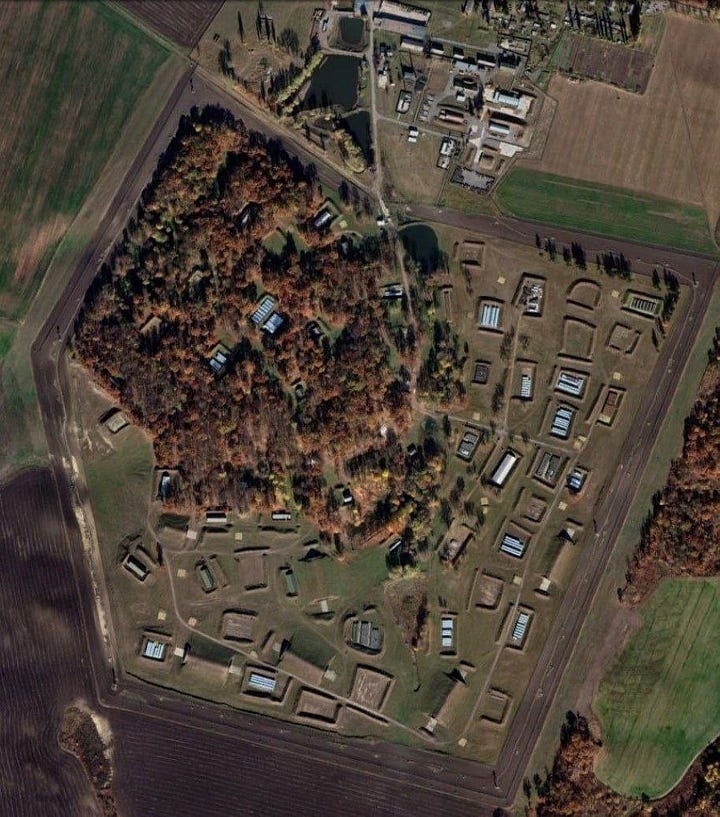

As can be seen an entire base full of dozens of warehouses, depots, quonsets, hangars, etc., appeared to be completely erased from the map. It even spurred some alarmist headlines that Russia had either used its own tactical nukes or destroyed those of NATO being housed there (no, I don’t actually think that happened, of course):
But the problem with the thermobaric angle, is that to my knowledge Russia doesn’t have any thermobaric vehicles/devices to deliver such a long range attack:
As can be seen, Khmelnitsky is around 250km from the Belarusian border, and even far more from the Russian one. The only real thermobaric devices that I know of are on large, droppable non-guided bombs. For instance the FOAB (Father of All Bombs) is a thermobaric, but requires a huge plane like a Tu-160 to carry it:
Russia has smaller Ofab-500s and such, which are basically non-guided, droppable, thermobaric variants of the old venerable Fab-500 iron tin cans:
The problem with all of these is since they’re non-guided bombs with no propulsion of their own, you’d have to deliver them by a bomber directly over the target. And to this date, there’s no real known instance of deep-penetration bombing runs done by Russia that far into Ukrainian territory. The reason is, Ukraine still retains long range air defense like S-300s and BUKs which are designed to take out bombers flying at high altitude.
It’s plausible that if they really wanted to, Russia could perhaps sneak a Tu-160 in there with a well-planned mission, simply because the air defense is likely more sparse in the Western part of Ukraine, however it would still be far too risky or nigh impossible.
There are no known long range guided missiles with thermobaric warheads that I know of, i.e. cruise or ballistic missiles like Kalibrs, Iskanders, etc.
So, this leaves the conclusion to be that it was most likely just a cheap old Geran-2 drone or standard cruise missile that did the job in Khmelnitsky. The huge ‘thermobaric’ appearance of the explosion was presumably due to the base storing large amounts of fuel as well as ammo, so the explosion mixed the two together.
Considering that, as can be seen from the earlier pics, this area was not some small depot but appeared almost an army base in size, it’s very plausible and likely that it had large fuel tanks on site for the operations of the ‘base’.
Here are the coordinates, by the way, which can be plugged into google maps to see the ‘base’ in detail: 49.452446, 26.878493.
16
Thank you. I have a question on the relationship of St. Obama and CIA -- his role in introduction of Deep State and National Security apparatus into all levels of US government institutions is still little known:
Durham Report Indicts FBI For Role in Russia-gate Scam But is Silent About the CIA
By Jeremy Kuzmarov - May 17, 2023
-- A Company Family: The Untold History of Obama and the CIA
By Jeremy Kuzmarov - October 1, 2021 ( Note: Photos themselves are truly fascinating )
A Company Family: The Untold History of Obama and the CIA - CovertAction Magazine
There’s not too much more for me to add on top of the link you provided, because everything there is pretty true and accurate. Obama was in fact a stooge. Everyone knows that prior to his being elected no one even heard of him or recalls ever seeing him in the public light in any way. He was a totally manufactured, fabricated entity meant to extend the deep state / intel services / arms corporations’ (in short, MIC) conquest of the globe. In fact, there have been some rather frightening rumors—I believe from George Webb, if memory serves—about Obama, that for instance he was once forced to fellate Henry Kissinger in order to be granted the permission to become president.
Whether that happened or not, he was a deep state creation through and through and had zero agency of his own, much less even than Biden, who, despite being a deep state puppet himself, is “in on” much more of the grift and corruption and is likely more of a middle-echelon figure within the deep state infrastructure.
The only extra thing I’ll note is that, as per the report you posted, one can see that a lot of these egregious intel operations over the past two decades have involved various Ukrainian expats and moles, like the mentioned Ukrainian Alexandra Chalupa, who was part of the DNC conspiracy against Trump. Now compare that to recent times—recall Ukrainian Alexander Vindman, also instrumental in Trump’s take down. How about in even more recent times, remember Nina Jankowicz, who worked as an advisor to the Ukrainian government? And there are many others.
The intel community uses these compromised figures from other nations for a variety of reasons, one of which is the known rule about the CIA not being allowed to ‘operate’ on U.S. soil, so it typically operates through proxies and third parties, ‘turning’ and compromising various figures in vulnerable countries under U.S.’s thumb.
By the way, everyone knows Obama’s famous connections to Marxism, which has fueled the theories that Obama was a secret ‘communist plant’ meant to ‘destroy America’ by internal subversion, a charge Obama did, ostensibly at least, appear to fulfill due to his pretty heavy handed socialization policies like the infamous Obamacare.
So, in light of that, this following entry from John Brennan’s wiki is interesting:
He applied to the CIA in 1980. During his application he admitted during a lie-detector test that he had voted for the Communist Party candidate four years earlier. To his surprise, he was still accepted; he later said that he finds it heartening that the CIA valued freedom of speech.
Of course, the U.S. deep state is filled with such compromised individuals, like the memory-holed instance of Paul Wolfowitz being investigated by the FBI in the 80s for being an Israeli spy.
And it’s true Brennan was very close to Obama, being an official advisor to Obama’s presidential campaign, then serving under his administration in several capacities. So, might it be true that Obama’s administration was a secret Yuri Bezmenov-esque Soviet subversion deep-cover program to “destroy the U.S. from within”?
What’s interesting is, most people know of the ‘pop culture figure’ of Yuri Bezmenov, but few know of the other lesser known Soviet KGB defectors who had not only underlined and supported Bezmenov’s ideological subversion claims, but even made far bolder claims. For instance, there’s Anatoliy Golitsyn, who was called by the CIA the most valuable defector ever:
CIA counter-intelligence director James Angleton identified Golitsyn as "the most valuable defector ever to reach the West".
Golitsyn published two famous books called New Lies For Old and The Perestroika Deception, predicting the impending collapse of the USSR and outlining the bold theory that the coming ‘collapse’ of the Soviet state will in fact be a grand KGB ruse meant to lull the West into a false sense of security, while the KGB in fact subverts the West, destroys it from within, and then rebirths the USSR several decades down the line.
Do I personally buy that theory? Not necessarily, I think it very likely that Yuri Bezmenov himself was a fraud milking the gullible West for fame and money; and in fact from what I recall there’s no evidence that he even worked for the KGB. But I don’t discount anything, and so there’s always the possibility. And whether it had anything to do with a KGB deep program or not, the truth is Obama’s background is clearly troubling and shrouded in a lot of interesting mysteries and connections.
17
I’m going to roll the next two questions into one as they cover a similar topic:
As i have stated in previous post:
- The West (NATO and the US) are blabbing about upping their MIC production rate. However, only the US can do such a things due to the Dollar hegemony in World trade, which mean they can use it to extort resources needed to produce ammunition from poor countries, those deep in debt trap by the IMF and WB. But can the EU do the same? And there is another problem with assembly line, the West are too accustomed to low intensity expeditionary "counter-terrorism" in dirt poort country, so the EU MIC is barely gasping for air now, if production need to go up, where do they get the much needed skill workers to operate the assembly? the same problem can be apply to the US, albeit not on the same level.
- The EU and NATO are increasingly integrated in every way possible (from political mindset to militarism). Is there any chance we will see a declaration of unification of the EU and NATO into a pan-European Empire? Not that the EU is not already a totalitarian political body (which is a far cry from it original purpose, which is simply a free economic bloc). Now the EU only need an armed forces for itself and an Empire will be born.
And:
Adolf dismissed Britain as "a Nation of Shop Keepers." He must not have known or cared that some Brits were building the Spitfire and the Hurricane, despite the British Governments obstructions. He also seemed blind to the technology the Brits were working on in their various Skunkworks. Nevertheless, all cutting edge military advancements require a nation with the financial and human resources to underwrite uncertain results.
So. With the unrestrained slip of the U.S. and Europe into complete Financialization of their economies, the near total destruction of Industry (with component parts outsourced in not so friendly nations), do you see a basis of know-how, talent, natural resource and funding (guns v. butter) for the West to shore up a long hot Cold War II ?
And how would this be impacted with the unknown probability of the pending skirmish in Taiwan?
It’s interesting this is asked coincidentally after the publication of this latest Washington Post article from a couple days ago:
The article gives some interesting insight as to what U.S. intel services believe Russia’s shell production capacities are. They claim 2.5M per year, which is roughly in line with my previously stated estimates of 3 - 3.5M that I wrote at length about here:
While this is not news to us, what’s news is that this appears to be the first true confirmation from Western officials that Russia’s productive capacities are that high. Keep in mind 2.5M a year is nearly ~210k a month. How much does the ‘superpower’ of the U.S.A. produce per month?
14,000.
And those are official numbers, not guesses. You read that right, it is now officially confirmed by the U.S. government itself that Russia produces literally 20x more shells than the U.S.
Sure, the U.S. was claiming to be ramping up towards 45k a month, with the eventual goal of reaching 90k in about 3-5 years.
So, the first part of your question, regarding U.S.’s ability, you seemed to believe they can do so because of the endless dollar, but in reality, the U.S., too, suffers from the same problems you mentioned for the EU. Which are: lack of human capital, infrastructure, escalatory/expansion headroom, etc. Not only are there supply chain, skilled labor, and materials bottlenecks, but they are issues not easily addressed, and by “not easily” some people believe, not-addressable, period. Meaning, the U.S. will not be able to ramp up at all.
I previously wrote at length about the reasons why. One of them is that the factoreis simply don’t exist. Recall when I wrote about U.S. having only one gunpowder factory in Louisiana and it blew up. It also has really only one shell production line (made up of several factories that each contribute a different element of the shell). The fact is, you can’t just build new factories from scratch, it doesn’t work that way. There are massive obstacles to overcome, not only in the above mentioned skilled workforce, materials, etc., but also the lack of incentive.
I wrote before about how it takes billions of dollars for companies to introduce new production lines, machines, testing, etc. This is typically only feasible for them if there are very high-confidence long term profits to be had. But these companies know that the Ukraine war’s outlook is iffy and that it can end at any moment. They don’t want to blow billions of their dollars fabricating huge new production lines only for the war to end several months down the line, and suddenly all ‘demand’ for their supply go to zero, which means they will have lost all that investment.
In Europe in particular where their energy needs have just been crippled by the decoupling from Russia’s cheap energy, production costs are now higher than ever. Thus, the upfront investment costs for opening new lines is insanely unprofitable and untenable. And with their crippled economies, high inflation, aging work force, etc., even getting the needed skilled labor is proving an insurmountable issue.
From the WashPost article:
Much of the announced military aid to Ukraine from Western governments has been sourced from equipment that would have gone out of service any way, Watling said. “Most of what we have given is stuff we have already paid for a long time ago, and we would have had to pay to decommission it … We are now talking about a situation where we have to put money on the table because we have to invest in industrial capacity.”
They go on to say that while the EU signed a ‘500 million euro plan’ to ramp up production, not a single actual contract has even been issued yet:
The European Commission this month announced a 500 million euro plan to boost production in Europe of the artillery shells Ukraine needs. Military experts say that although the initiative marks a significant shift, it has been too slow to act. The E.U. is yet to issue any new contracts, Watling and Barrons said, and there has been protracted wrangling over how a separate 1 billion euro program would be spent to purchase further artillery shells and missiles.
And for anyone who disbelieved my earlier numbers, once again this brand new article confirms America’s paltry production rates:
Last year, the Ukrainian army was blasting through 180,000 artillery shell rounds per month. Before the war, U.S. production stood at 14,500 shells per month, and E.U. production was around the same. The United States has been faster to respond to depleting stockpiles, boosting domestic production to 20,000 rounds a month and investing in new capacity to eventually increase that to 90,000 rounds per month.
But they confirm that the entire EU also produced another 14.5k per month, for a grand total of around 30k. Meanwhile, they said at the beginning Russia produces 210k a month. That means Russia is outproducing the entire ‘global north’ and Western world by an extreme factor.
BUT: in modern warfare, this is still no where near enough. That 210k amount only allows you to fire a measly 7,000 shells a day, and we know Russia likes to consume upwards of 50-60k a day. Wagner alone was firing that number per day just in one city, Bakhmut.
This is why I estimated Russia’s production will eventually go up towards 7-9M per year.
The article ends with this gut punch:
“Russia has the capacity to mobilize its own economy in support of the armed forces and control its own destiny in a way that Ukraine can’t,” said Barrons. “The critical weakness” for Ukraine “is its reliance on Western inventory and industry.”
As to your last question about a PanEuropean Empire. I doubt it, it seems to me that the EU and NATO will collapse first before it gets to that point. The people are way too angry and are rising up against all their Eurocrat puppets. In fact, a new NYTimes article just called the gathering of G7 leaders in Hiroshima as a ‘club for unloved leaders’, citing the fact that every G7 leader who attended pretty much has an abysmal approval rating of less than 30-40%.
Survey data compiled by Morning Consult in recent days indicated that the leaders of only four out of 22 major countries studied had approval ratings above 50 percent: Narendra Modi of India, Alain Berset of Switzerland, Andrés Manuel López Obrador of Mexico and Anthony Albanese of Australia. Mr. Modi, who is in Hiroshima as an observer, is the envy of the town with a 78 percent approval score, though this is in a country where religious divisions are exploited for political gain and the prime minister’s top political opponent was kicked out of Parliament for defamation.
No G7 leader, by contrast, could muster the support of a majority. Prime Minister Giorgia Meloni of Italy, elected just last fall, fared best with a 49 percent approval rating, according to Morning Consult, followed by Mr. Biden with 42 percent, Prime Minister Justin Trudeau of Canada with 39 percent, Chancellor Olaf Scholz of Germany with 34 percent, Prime Minister Rishi Sunak of Britain with 33 percent and Prime Minister Fumio Kishida of Japan with 31 percent. President Emmanuel Macron of France trailed the pack with a dismal 25 percent.
Thus, I think the dissolution of these totalitarian structures is much more likely than them consolidating. It’s only a matter of time that more and more nationalist, far-right-style leaders like Orban are elected or major societal unrest completely conflagrates these countries.
With that said, I do think they will push for what you said. The true power elites at the stop will stop at nothing for their dream of establishing a total one world government state, but I simply think there’s a stronger chance of them failing.
As for the last portion about Taiwan: “And how would this be impacted with the unknown probability of the pending skirmish in Taiwan?”
This part is very clear: top U.S. officials have recently stated very openly how uncomfortable they are with the long drawing out of this war, and the mass expenditures they’re forced to incur while Taiwan is gravely needing their attention. For instance, watch the tail end of the video at the top of this article, around the 7:20 mark:
U.S. congressman Michael Waltz impatiently states that Ukraine is eating up critical resources needed for the IndoPaCom Theater (Indo-Pacific Command). And I’ve seen several other prominent figures recently intimate the same thing. So to me, I believe this sentiment is very prominent and growing daily in the beltway establishments.
Just take a look at some of my other responses in this mailbag regarding munitions expenditures, and U.S. stockpile drawdowns, such as the M777, which was deemed completely exhausted from stockpiles. This goes for every other weapon as well. They’re not even able to produce enough of them to continue feeding Ukraine, yet they have a giant monster that’s even bigger than the proverbial ‘elephant in the room’ in China staring them down over Taiwan.
Ultimately, what this boils down to is my ongoing belief, which I’ve written about several times recently, that after this year the establishment will really want to wind the Ukraine war down, and likely seek a Korean DMZ scenario. Particularly because this converges with the 2024 election cycle. Combined, I believe these things will be a critical mass of pressure that will force the West to have to either abandon or wind down Ukraine.
That can only be changed if for some reason China strongly signals some manner of a posture change on Taiwan, or causes the west to strongly believe they won’t attempt to take Taiwan by force anytime soon. However, we know from previous reports that Western insiders believe the timeline for the Taiwan scenario is around 2025 give or take, so there’s great pressure to arm Taiwan ASAP. The ultimate question though, is what is more important to the west, Taiwan or Ukraine? Because they clearly can’t have both and have to sacrifice one to stand a chance at the other. But this is a topic I intend to do more thinking about and treat at length in its own piece sometime in the future.
18
Has the Russian MOD ever confirmed the Kinzal strike on the NATO bunker a few months ago?
This question appears to rear its head every once in a while. Unfortunately, the answer is still no. There are dubious websites that claimed with brash clickbait headlines that MOD did confirm it, and maybe that’s where some people are still getting this hopeful idea:
However, no where in the above article does it actually show proof that the MOD ever ‘confirmed’ this fact. They cite a perfunctory report by military spokesman Konashenkov which simply confirmed a series of strikes on that region in Western Ukraine, but nothing about any NATO bases and all that.
I don’t think we’ll ever know, or at least not for a long time, if such a thing really happened or not.
19
Do you give any credence to Seymour hershs claims that Poland and Hungary are privately pushing an obstinate comedian to sue for peace?
There’s not too much I can say about it simply because his claims come from the usual ‘insider info’ that I don’t have access to, so I can only speculate. It did strike me as very difficult to believe that Poland of all countries would be pushing for this.
On the contrary, Poland seemed to me to be loving the Ukraine conflict as it’s giving Poland major opportunities for expansion. Not only are they laundering their military stock by running the old Soviet stuff through to Ukraine while receiving shiny new Western goodies in turn, but they’re slowly expanding in power and prestige within the EU as the main ‘bulwark’ against Russia.
I’ve written before about how Poland is likely trying to use this conflict as a springboard to reestablish the old empire, or some version of a Polish-Lithuanian commonwealth or Intermarium so I can’t quite square how Poland could conceivably be itching to pull the plug on Ukraine. I can only assume that perhaps Sy Hersh’s ‘sources’ are not ones aligned with the top political leadership but rather some minor oppositional forces.
With that said, it could very well be true because we don’t see all the problems which Poland may be incurring, particularly the refugee issue that I believe Hersh cited as responsible for this. And plus, what I said may not necessarily be mutually exclusive. Maybe Poland has a plan to absorb parts of Ukraine or push towards those lofty goals even in a peacetime setting, and maybe there’s even some reason for them to believe that a peacetime setting would be even more conducive for those plans. For instance, as one hypothetical scenario, during an armistice Poland could suggest to take over and be a sort of custodian of certain Ukrainian lands in order to safeguard them; something like that has already been suggested in earlier reports.
But this is one issue where I’m going to have to defer for now and “wait and see” while holding my ear close to the ground. For now I don’t see any evidence of such a secret ploy, but will have to see how the next couple months go and whether the coming climactic events give us a much better reading and clarify that specific situation.
20
My question is: do we know who is winning the counter battery fight in the artillery war? Do we have any idea of how Russia or Ukraine's artillery is being reduced? It seems to me that just destroying enough guns could swing the war. How fast can Ukraine build new artillery pieces?
Russia is winning it quite handily but the wrinkle is that Ukraine still possesses a lot of various artillery capabilities, be it regular shells, tube-launched, etc.
This recent article from Forbes went into some of that, at least from the official Western standpoint, which one has to take with a grain of salt.
It opens with:
To date, Ukraine has received at least 390 pieces of towed artillery and 440 self-propelled guns. NATO’s “big guns” have performed well in Ukrainian hands, but they are suffering heavy losses to Russian action.
Ukraine’s loss rates are brutal. Of the approximately 152 big M777 155mm towed howitzers that “officially” arrived in Ukraine, over a third have already been damaged or destroyed.
While they classify the losses as brutal, some observers may balk at their listed number of only a one third of delivered M777s being destroyed. This is from ‘ORYX’, who famously inflates Russian numbers while conveniently ignoring many Ukrainian losses. So if even he says Ukraine has suffered one third losses then the reality is likely minimum 50-70%.
The article claims that the other systems like Polish Krabs and American M109s have around 20% losses.
This article also sheds some light on the issue:
Previously, the United States provided M-777s, which are the currently fielded towed howitzer. These mostly came from deactivated Marine Corps cannon units, as the Marine Corps shifted to long-range missile and rocket systems. Some came from squeezing maintenance and training equipment pools. However, the Department of Defense (DOD) has indicated that it cannot provide any more M-777s without taking them from operational units. That entails a level of risk that the DOD is not willing to accept.
It goes on to say that U.S. has resorted to providing the 105mm light howitzer, M119, because it can’t really provide anymore M777s without taking them from active units.
The fact that the latest U.S. aid package contains no artillery, despite the clear need, shows that inventories are exhausted.
In terms of real “counter-battery” in the way we think of it, Ukraine from my vantage point is hardly doing anything anymore. The only real hits on artillery systems Ukraine sporadically carries out are strikes on parked, hidden/camouflaged systems in the rear with prestige weapons like HIMARs, etc., rather than artillery duels on the actual frontline.
Russia, on the other hand, is decimating Ukraine’s artillery systems on the actual line with Lancet systems and superior counter-battery units which outrange Ukrainian howitzers, like Russia’s 2S7M Malkas, 2A36 Giatsint-B, 2S5 Giatsint-S, etc.
To answer your question of ‘how fast can Ukraine build artillery’—it doesn’t build any at all, so the answer to that is none. All of its artillery is Soviet leftovers and what’s imported from Western arms aid packages. So you’re right, they’re being depleted badly but the West is continually trying to scrounge around for new gear to send, though it’s likely running out of options. Every day there are so many new Russian hits on Ukrainian artillery systems that I barely bother to even put them up anymore on my video channel. Just yesterday alone were two separate videos of new Polish AH Krabs destroyed, such as this video of one Krab driving past another destroyed one.
Also, Ukraine has no real capability to service their barrels which are all being depleted from overuse. Russia on the other hand swaps barrels regularly on the frontline:
With that said, artillery is very difficult to fully root out because it’s by its nature meant to be highly conceal-able, operate furtively and many of the systems are very mobile so it will be a long attritional battle to truly deplete them to a level where they’re not able to cover a lot of the front. With that said, this is one fight that Ukraine stands no chance of competing against Russia in, as Russia has thousands of artillery systems, so much so that only the ammo is the bottleneck, which is why Russia has turned to converting T-55s and T-62s into indirect fire artillery guns.
21
Hello, Simplicius!
Q: Do you have any good sources for economic analysis? Specifically about Europe.
(Not part of the question but, I'm really curious, because I see a lot of strange phenomena these days. Here, the industrial suppliers we work with from Germany show no signs of the "deindustrialisation" Europe is currently supposedly going through, no changes in delivery times or cost for that matter. Things barely changed. Also, I see that despite consumer goods prices being high, the situation seems to be stable even here in Hungary (our wages are piss poor conpared to German wages).
I don't see the "Europe is collapsing" angle. It might be outcompeted over time by the US and China, but I don't see the structural changes yet, not for a good few years, anyways.
Unfortunately I don’t have any one good source, as I mostly just glean information from as many different places as possible.
That is interesting what you report though, it may really depend on the industry because there are a lot of people reporting things to the contrary, but it’s hard to make a clear assessment through the endless web of disinfo, propaganda, etc., that cover this entire field.
Also, there are obviously some objective and tangible cases we’ve seen with major companies shutting down, cutting vast amounts of workforce, etc. Sometimes this is not visible because, if a company with a 200k workforce cuts it down to 100k, and you have a particular contract with that company, that doesn’t necessarily mean your personal contract will be affected. They may very well still provide everything on time but their operations with many other clients could be drastically scaled down. For instance, German chemical giant BASF had announced major “permanent” downsizing.
Also, many German manufacturers were said to have instituted major ‘pauses’ in their operations which go off and on depending on that week’s particular energy prices. Another thing is that just because prices have skyrocketed, it doesn’t mean companies will collapse. They can simply eat massively into the companies’ overhead, profits, etc., but companies can always continue taking out large new loans for the time being, but it’s kicking the can down the road and inflating the issue to explode down the line.
Like I said, I think for now most companies are just ‘eating the costs’, so it’s true you may not see a gigantic palpable difference, it’s more like a cancerous patient who may look healthy on the outside, but is rotting internally. With that said, you do bring up a good question and perspective, I’ll ask the audience to chime in and see what Europeans think, and whether the changes are noticeable to them. Also, maybe others could give some suggestions for good source for incisive European economic analysis.
Only other thing I’ll say is, this past winter was only the very first winter that Europe lived through in the ‘post-Russia-decoupling’ world. I’d give it a little more time to see how the situation truly carries out. Major economic movements of this nature take some time to percolate down so we’ll see how Europe is really doing by the 2024-2026 period or so.
22
I’ll also roll the next two questions into one as they cover the same general topic:
How are the Ukrainians flying planes, don’t they need airports, and are they not easy for the Russians to hit? If this is a dumb question, please forgive me. I have no background in military affairs. Cheers.
And:
Is there yet another gear Russia can engage to cancel any benefit NATO expects from F16 deployment?
Is my perception that these planes will need basing in Poland and Romania valid?
There are two ways to look at this. The first is that most of the Ukrainian ‘airforce’ is deep in the Western part of the country. And there’s one important way of looking at it to have the proper perspective, which is first by seeing a map comparison to the size of Ukraine to that of some European countries:
The above map shows the true sizes of Germany, France, and the UK lined up side by side across Ukraine towards southeastern Russia. The yellow arrow represents roughly where the bulk of Russian cruise missiles are typically fired from. Towards the western end of the yellow arrow you can see Lvov, for instance, to show the span of Ukraine.
The point of this is, Ukraine is much bigger than most people account for. The cruise missiles fired by Russia have to travel the distance equivalent to traversing most of Europe. What this means is that cruise missiles fired from that region have to fly for literally several hours to reach their destination in western Ukraine. This gives Ukraine huge amounts of lead time to be alerted to the launch of the missiles by their CIA / U.S. counterparts (who watches all Russian launches by way of their various satellite and C4ISR systems), and then scramble their jets to safety if need be.
I’ve seen at least two separate videos showing Ukrainian jets being scrambled just as cruise missiles come in and explode around them, so we know for a fact this is done.
Secondly, there are many videos showing Ukrainian jets taking off from highways, like so:
And even the famous photo of a Ukrainian Su-27 which hit a road sign in Kiev during earlier training for such operations:
Rybar did a whole analysis of this UA tactic, using the geolocated video of Ukraine’s Mig-29 taking off from the highway:
✈️ About the runway on the Dnipropetrovsk highway
The other day, footage appeared on the Ukrainian segment of the Internet with the take-off of the MiG-29 fighter of the Ukrainian Air Force from the Dnipropetrovsk highway.
🔻 Why from the highway?
With such measures, the command of the AFU seeks to additionally secure its aviation from strikes against its bases. This is not new to the enemy: on the first day of the SMO, a few hours before the start of the massive Russian attack, the planes left for alternate airfields. As a result, most of the launches fell "in milk".
And since the end of last year, the engineering units of the AFU, together with private construction companies, began to conduct reconnaissance for the deployment of tactical aviation field airfields.
🔻Where are these objects located?
The enemy is creating one of the improvised airfields on the E105 highway from Dnepropetrovsk to Kharkov. On the 16-kilometer section of the highway, construction work has begun to re-equip the road for a runway.
Coordinates:
–Beginning of the runway - 48,6411869, 35,1683306
–End of the runway - 48,7316392, 35,2532717
Along the site, fences and lawns were dismantled from the dividing strip. In their place, a solid roadbed was laid, and taxiways, aircraft parking spaces and ramps to them with PAG-18 reinforced concrete slabs were equipped parallel to the highway.
Coordinates:
–Parking №1 — 48,6728650, 35,2060411
-Parking №2 - 48,7227464, 35,2513517
🔻The tactics of the Ukrainian Air Force to change bases in the past has shown its effectiveness. In particular, from all Russian strikes on airfields, the AFU lost only a few of their aircraft.
The construction of improvised runways complicates the search for new aircraft stands from the satellite. However, not every road in eastern Ukraine is suitable for creating a network of such bases, which narrows the exploration area to a few major highways.
They provided a photo of one of the mentioned ad hoc landing strips built into the side of a highway; basically a sort of temporary fighter jet parking lot and shelter somewhere in a catchment area off the shoulder of a highway.
As Rybar states, building these random aircraft points off of highways all over the country ‘complicates satellite searches’ for aircraft. This one may not be deep in the Western part of the country, but it’s still deep enough right next to the city of Dnipro, well beyond Ukrainian lines.
And when the planes are actually in the air, they of course operate at extremely low altitudes. Some people have asked whether Russia has ‘look down radars’ that can spot even low flying craft. Sure, Mig-31s, Su-35s, AWACs all have look-down capabilities, but that is still tough to do when the aircraft are 1. at great range and 2. flying extremely low, even much lower than any ‘look-down’ capability was really designed for. Most such capabilities were created in the Cold War for objects flying at a few thousand feet, or cruise missiles at least doing 500ft AGL. But Ukraine flies its craft at crazy low levels, sometimes 20-50ft above the ground. To a radar, such objects can simply be filtered out as actual ground vehicles. Plus, much of the time at such low altitudes they are likely ‘screened’ by a variety of obstructions, natural or otherwise, such as trees, hills, buildings, etc.
And such Ukrainian improvised areas are under cover of air defense anyway so it’s impossible for Russian aircraft to penetrate close enough to even detect them with look-down modes.
Recall that these Ukrainian tactics are standard Soviet doctrines from the Cold War. This is exactly what these planes were built for, and Ukraine has kept that part of their military lineage and learned well from it. With a gigantic country which was the largest in Europe by land area, it’s very difficult to scan every single highway and find all such emplacements.
As to the second question: “Is there yet another gear Russia can engage to cancel any benefit NATO expects from F16 deployment? Is my perception that these planes will need basing in Poland and Romania valid?”
Firstly, to address the Polish issue, I believe Medvedev and other Russian figures already stated that if any ‘Ukrainian’ aircraft perform active combat missions from bases in other countries, then those bases will be struck. This is a big red line for Russia.
Secondly, this is not really possible anyway. F-16s don’t have the ferry range to take off from Polish bases for missions unless they were doing aerial refuels in the middle of Ukraine, which is not going to happen. A fully armed and loaded F-16s combat range is something just over 500km. The distance from the Polish border to Donbass is over 1,000km just one way. That means the planes would have to be doing over 2,000km for a roundtrip mission—that’s just not going to happen. Once again, I remind people how deceptively large Ukraine really is. You can add drop tanks to increase the range, but they also greatly decrease the weapons you can carry. The more you add, the less weaponry.
The word from Ukrainian advisors and airforce spokesman now is that Ukraine will receive something like 18-20 planes, at least at first. The question of, what can Russia do extra to counteract this? The truth is: nothing. Because to me the F-16 thing is a big nothingburger that Russia does not need to even address with any particularly extra changes to their operations.
The reason is that I believe the F-16 issue is mostly a psychological operation designed not only to boost morale of both Ukrainians and their partners, but to also act as a dissolving agent towards any skittish European cold-feet issues, so that other ‘partners’ can feel more confident contributing more ‘prestige’ systems of their own, not only in terms of airpower (Mirages may be next on the menu) but in general.
The actual small contingent of F-16s will not create any appreciably increased risk to Russian forces. All of the capabilities the F-16s can ‘bring to bear’ to the battlespace are things already being used and already mostly nullified by Russia; i.e. Storm Shadows, JDAMs, etc. And in terms of air to air threat to Russian aerial capabilities, I don’t foresee the F-16s even operating close enough to the contact line to be able to really detect or attack Russian craft.
Their detection ranges are maybe 150-200km at the most, and that’s for high flying craft. The only time Russian craft fly high is deep inside their own territory when they’re releasing stand off munitions. Which means that the F-16 would have to be right on the contact line to try to engage them and that’s not going to happen. Frontline Russian fighters like Su-25s operate extremely low, and due to the natural physics limitations of radar horizon, to detect them at long distance would be impossible.
In short, the introduction of F-16s to the theater is a thing I’m worried about least. And this is not mere bluster or putting on a facade of strength. I openly admit to systems which are true threats. I do believe HIMARs for instance is a major threat, but only if it exists in high enough number to effect saturation on Russian AD. Having 16 systems spread all around the largest country in Europe is not that.
But F-16s I can confidently say pose almost no risk whatsoever apart from giving the West/EU a new platform to offload stockpiles of weapons which haven’t run out yet. Since we know HIMARs missiles have already been running dry, they simply need a new platform which can shoot off weapons which the West still has stockpiled that they haven’t touched yet, such as JDAMs and these Storm Shadows. But the Storm Shadows in particular will run dry fast as well, as there aren’t many of them, so don’t expect this new fad to last long. Refer to my recent article where I expound at length about what I really think the F-16 wildcard is all about:
A new article showing the U.S. airforce chief agrees:
He states:
The F-16s “will give the Ukrainians an increment of capability that they don’t have right now,” Kendall said on Monday at an event in Washington. “But it’s not going to be a dramatic game-changer, as far as I’m concerned, for their total military capabilities.”
And don’t forget about this congressman’s frank admission:
23
Any further information on the Ru aircraft downed about 10days ago? The Ru Mod admits to two not three to four? Was it simply a case of complacency and 'switching off before the plane is back in the hanger' or even a 'friendly fire'. In the overall scheme of things it is a 'blip', however, study, analysis and simulation/practise is how we learn in aviation. Anyway, the US seems to be proceeding with the training of Ukr pilots and the supply of F16 aircraft. It will be interesting to see how far this dance can go before the escalation that the neocons seem to desperately want comes to fruition. Thank you for your extensive research. Cheers.
I couldn’t find anywhere that the Ru MOD themselves confirmed a particular number of the shot down craft. I know the Zaporozhye governor stated there were four, but of course he wouldn’t necessarily know for certain. And it’s true that we appeared to have videos related to only two objects that I know of: a video of a falling Su-34, followed by on the ground video of its wreckage; and the video of the moment of an Mi-8’s shoot down.
With that said the FighterBomber channel linked to the Russian airforce did appear to confirm all the losses, including the 11 total deceased airmen. And to answer your next question, I’m going to post FighterBomber’s entire post, which I’ve shared before, as I now lean towards his description of what might’ve happened:
By the tragedy that happened the day before. Let me remind you that 4 sides were lost in 2 minutes. 11 people.
I can say that it has not become clearer. MO froze.
There are two main versions.
The first version is the usual work of the air defense of Laos in the panic mode "kill everyone - God in the next world will sort into friends and foes."
Due to the fact that a year later, the system of state recognition, or as it is also called the "Friend or Foe" system, does not work rather than works, and nothing has been done about it so far, I do not exclude that its creators, manufacturers and controllers are already without exception Heroes of Ukraine at least in the rank of colonel with not sickly numbers on the accounts.
It's good that there is no war, otherwise they would all have to be shot, otherwise everything is fine. All according to plan. Eliminate shortcomings, distribute state awards.
The explanation goes thinly that in Laos, in principle, nothing works 100% and sometimes a working system of state recognition is a given that everyone has come to terms with.
Well, the second version is that it was the enemy’s air defense that worked. There are rumors in her favor, but no facts have been provided yet. The range and height of the defeat of one of the targets crosses out almost all the air defense systems that the enemy and NATO have, except for the Patriot and S-300, taking into account the assumption that the battery operated from the line of contact.
Somewhere in the distance, an extreme one in the form of a litak with an AIM-120 looms, but there it does not grow together for nothing.
100% the reason and the culprit will be clear when they find the striking elements of warhead missiles. They will make everything clear. But there is a nuance. If the air defense of Laos was shot down, then it will be necessary to transfer someone to another higher position, or even fire them, so the striking elements may not be found, or they may be found and shown what they need.
Approximately all the same must be done if the air defense of Laos is innocent.
To fuck up such an air defense system battery on the LBS, you have to try very hard.
Our layouts are shitty in both cases:
If it was an enemy, then the Lao Air Force lost the ability to work safely with UMPCs up to and including 500kg caliber and X-29 missiles, and lost the ability to work with pitch-ups and ATGMs. And having learned about the effectiveness of such batteries, the West will soon pour soul into the enemy.
If this is not the enemy, then even worse. It is impossible today to fight with aviation, serious UAVs and air defense systems, without a reliable Friend or Foe system, not in kamikaze mode.
Well, I’m all about Laos, of course we don’t have this. We still get fucked for banks more than allowed and remove pilots from flights for flying at an altitude below the height prescribed in the log check log. Because it sucks, really. It's not really a war.
The translation is a little rough around the edges, for some reason he euphemistically refers to Russia as Laos, in some kind of jest. The point is that, his conclusion is it’s very likely that this could have been a friendly fire incident. In support of this he states the well-known opinion that Russian IFF (Identity Friend Foe) systems can be faulty.
I said in a recent report about how most Russian shoot downs over Donetsk last year, particularly of higher flying Su-34s, turned out to be friendly fire. However, in that case it’s a little more understandable: DPR-operated anti-air systems would have greater problems in deconflicting with Russian craft. The reason for this could be a variety of reasons, including recalcitrant Soviet-style generals who may in fact not trust the DPR enough to give them the IFF codes. IFF codes are famously highly sensitive state secrets. They are never transmitted and must only be inputted in person, by hand, in a direct transfer to the system.
The reason is, if an enemy gets your IFF codes, they could completely nullify your entire aerospace/AD system. So there could be some hesitation on Russia’s part to provide IFF codes to adjacent allied forces, banking on the hope that they can just deconflict the old fashioned way, particularly because Ukraine doesn’t fly many sorties so anything that’s in the sky should be assumed to be Russian.
But that’s in Donbass. On the Russian border with Kiev, it’s certainly not DPR forces that are manning the AD. Although, ironically, the city of Klintsy where the craft were hit is even closer to the major Belarusian military city of Gomel, than it is to Kiev. Could Belarusian AD have accidentally shot down the craft? This explanation is even likelier to me than Ukraine having shot them. The IFF issue would also carry here because Russia might have not given them the codes for the same reasons as stated before.
This is very common; most air kills in any U.S./NATO war of the past few decades were typically friendly fire between two adjacent allies, i.e. U.S. shooting down British craft and vice versa for similar reasons to this. An example:
Just look at the above, a lot of British systems destroyed accidentally by U.S. And it even states the issue:
23 March 2003: A Royal Air Force Tornado jet was shot down by a U.S. Patriot missile which identified the aircraft as an anti-radiation missile, killing two crewmen.Investigations showed that the identification friend or foe system indicator had malfunctioned and hence it was not identified as a friendly aircraft.
The fact is, Ukraine has no systems really capable of striking a craft that deep into Russia. It could have only happened if they placed an S-300 or Patriot system directly on the Russian border, and that is an absurd notion. The Patriot is a massive system that takes hours to set up, and there’s no way the U.S. would allow risking its capture on the Russian border. S-300 is nearly as unlikely, given their AD shortage. The only logical conclusion is that it was blue on blue fire of some sort.
However, if it was a Ukrainian shot of some kind, then the only explanation would in fact be what you said, the mental complacency from having run that same mission profile over and over in recent weeks, which it is known that they have done.
With that said, for a much more detailed analysis, I don’t know if you’ve seen but I wrote an entire piece dedicated to it, you’ll get even more of my thoughts on the matter there:
It includes much more specific weapons details, maps, and measurements to really put in perspective some of the things I just described above.
One thing I forgot to mention though: I’ve seen the theory promulgated that some phantom American ‘F-22’ stealthily snuck into Ukraine to do this sneak attack.
Here’s the problem with this:
Note my earlier explanation on aircraft ranges and how the F-22 would have to have flown thousands of kilometers round trip from Poland or Romania
One major thing most people forget: the F-22 can only be “stealth” in the presence of a friendly AWACs unit lighting up a target for it. Most casual observers don’t realize that an F-22 has to fly with its radar cold, i.e. turned off the entire time in order to be ‘stealth’. That means the only way it can receive target data is passively from an AWACs in the rear supplying it with data. But the area was too far for any NATO AWACs in Poland to reach. And if the F-22 was flying with radar “ON”—guess what?—that means it wasn’t stealth, and any aircraft in a several hundred kilometer radius can easily see its radar signal and lock onto it. So, that theory’s out.
As for your final comment, one thing I’ll say is that realistically MOD may even welcome the supply of F-16s to Ukraine. The reason is that it provides excellent training conditions for Russian pilots to finally go up against their long time adversaries in a relatively low risk environment, where the contested space is mostly controlled by them and all auxilliary systems like networked ground radars, AWACs, etc., are on their side.
I myself see it this way, and I believe it’s actually a good thing for the future improvement of Russian pilots, air doctrine, airforce capabilities in general, for them to get this once in a lifetime, rare ability to contend against the arch nemesis of the F-16 in a way that does not present any existential or even gravely elevated risk to them. Thus, I for one support the F-16s brought to Ukraine, it’s actually excellent for Russia, allowing their pilots to cut their teeth and greatly improve the capabilities of the entire VVS.
24
what are the factors that led the west's syria gambit to fail? in theory they had the neighbours onboard, saudi laundering the lethal aid, isis, fsa, bellingcat etc etc etc... How did it fall apart? endurance of bashar and syria, some logistical cunning of iran and russia ?
The one word answer: Russia.
The longer and more nuanced answer is of course that Iran also helped, particularly being the catalyst by way of General Soleimani who is said to have been responsible for convincing Russia to come save Syria with his eleventh hour trip to Moscow.
But when Russia descended upon Syria like a bat out of hell in September 2015, it was a massive knockout punch that single handedly thwarted the Empire’s plans. It came in two phases: first destroying ISIS, which has now been completely erased from history and memory-holed. The U.S. and ‘Trump’ are now credited with having destroyed ISIS simply because the U.S. desperately attempted to intervene after Russia had already stolen the show, because they didn’t want to be left out, looking impotent and humiliated. So they began a lukewarm campaign to blow up Raqqa with long range artillery from the U.S. Marines operating M-777s now popularized in Ukraine.
However, this was nothing more than stolen valor in the same way as the U.S. attempts to steal Soviet valor from the Great Patriotic War. The U.S. did next to nothing against ISIS and history will forever record that Russia single handedly destroyed the caliphate—a fact attested to by all of us who covered those events in detail at the time.
The desert environment and lack of anti-air capabilities were perfect for Russia’s airforce to annihilate the caliphate caravans. The flat open terrain allowed Russia’s ISR to find them everywhere and destroy them with impunity. Unlike in Ukraine where Russia is constrained by long range air defense from using their truly premier strategic level craft like Tu-22Ms, etc., in Syria they regularly overflew and carpet bombed the enemy with these craft.
At the end, the impressive tally was a mere 112 Russian servicemen lost, with over 85,000 CIA terrorists liquidated:
Russia annihilated entire convoys of ISIS tankers, which were their funding lifelines. Once ISIS was mopped up, Russia turned to helping clear out all the chameleon-esque CIA rebel groups.
Ultimately, Russia outright bullied the U.S. out of Syria, into the barren hinterlands of the east.
Not to mention the constant air dominance Russia imposed over American fighter jets, with Russian Su-35s repeatedly bullying and humiliating American F-22s over eastern Syria.
Including when a Russian Su-35 actually intercepted an F-22 undetected, and locked onto it. The now famous photo was actually first posted by the aforementioned FighterBomber channel connected to the Russian airforce:
So, to answer your question of ‘what happened’ in Syria. Russia happened. They humiliated and chased away the American paper tiger, or is it paper eagle? Once Russia boldly imposed itself in such a fashion, it drew a red line in the sand, and the U.S. could no longer directly support its proxies, thus leaving them to the slaughter as Russia was able to go to town on them, treating the FSA and all its endless offshoots as a shooting gallery from the sky.
This, of course, even extended to the naval theater. The famous stand-off between Russian and U.S./Nato naval forces might have happened in September 2013, before Russia’s full blown intervention, but it does highlight that Russia was in fact supporting Syria and shoring up Assad’s government long before ‘officially’ intervening.
In that famous stand-off, which was much written about at the time, Russia likewise sent the U.S. packing, as the entire NATO flotilla fled with tail tucked between their legs after Russia refused to let them launch a massive missile strike at Syria.
There were even reports that two missiles were in fact launched and Russia intercepted them. At the head of Russia’s flotilla and likely doing the interception (as it was armed with S-300s, etc.) was of course the flagship, Moskva.
It was claimed by a Lebanese newspaper quoting diplomatic sources that the missiles were launched from a NATO air base in Spain and they were shot down by the Russian ship-based sea-to-air defence system. Another explanation proposed by the Asia Times says the Russians employed their cheap and powerful GPS jammers to render the expensive Tomahawks helpless, by disorienting them and causing them to fail. Yet another version attributed the launch to the Israelis, whether they were trying to jump-start the shoot-out or just observed the clouds, as they claim.
The Libyan massacre at the hands of the West had just occurred two short years earlier. NATO was riding high, thinking themselves unstoppable when a newly renascent Russia finally put their foot down and did what they were unable to do in Libya.
The West led by the U.S., not surprisingly, folded like a cheap house of cards.
P.S. for anyone interested in a more intricate treatment of this general topic, I recommend reading my previous essay on the entire post-USSR scramble towards the Middle East:
25
While most everyone agrees taking Odessa is the ultimate goal for the Russian side in this war, the logistics of taking it would require a big arrow attack across Central Ukraine that would be difficult to achieve unless the AFU collapses. To me, the 2nd most valuable city is not Kiev, but Kharkov, due to its relatively Russian cultural makeup as well as being a major economic center. How much more feasible is a move to isolate it is versus the difficult task of making it to Odessa?
I agree with you, I’ve previously even argued here that Kharkov may actually be the most valuable city in Ukraine, even more so than Kiev—at least vis a vis Russia’s purposes. The reason is the specific technological institutions that exist there are second to none, in terms of military and science. And in timely fashion, this video had just recently made the rounds, which illustrates how Kharkov is a truly Russian city through and through. It was taken months after the dissolution of the USSR, with people on the street asked by a provocateur conducting a sort of social experiment, whether they prefer to be with ‘Ukraine’ or Russia/USSR. See their reactions for yourself:
(And yes, as a side note, I just realized videos can be embedded directly into the article, so I’ll likely be enthusiastically overusing this feature from this point on, as I generally have tons of videos to post to underline my points.)
To answer your question though, it should theoretically be fairly easy to isolate Kharkov, surround it, and ultimately capture it. Because it’s right on Russia’s border, and it doesn’t have any ‘tricks’ like Mariupol, where Azov was able to resupply themselves over the sea by flying helicopters super low under radar coverage.
So the only real constraint was always the manpower issue, Russia simply didn’t have enough men to commit to that theater, as there were always more pressing exigencies. What could be more pressing than capturing such a large and important city, you ask?
Well, for one, Putin signed the Donetsk and Lugansk Republics constitutionally into law as official federal subjects of the Russian Federation. This means that the number one priority beyond anything else is first liberating those republics, as they are now actual Russian lands that from the legal standpoint are occupied by an enemy force, no different than a hostile army occupying Belgorod or Bryansk, etc. Putin is legally and constitutionally bound and required by law to liberate these territories now.
The Kharkov region, on the other hand, did not hold a referendum yet, and was not given such a status so it must ‘wait in line’ until Donbass is fully liberated.
With all that said, once liberation time comes, it’s not quite as easy as I made it sound, due to the geographical particulars around Kharkov:
If you note those red lines, they are pointing to the main supply route arteries. But east of Kharkov has no real arteries to surround the city with from the east. There’s nothing but trackless farmland there with almost no roads. That means for heavy vehicles and logistics you can’t just come in north from the Russian border and envelop the eastern side of Kharkov. The supply route has to come by way of that highway from the east over the Siversky Donets River you see there.
So that simply means everything east of Kharkov has to first be recaptured in order to stand a real chance at ‘encircling’ and besieging the city. But if you’ll recall, Russia gave up a massive amount of territory there, all the way past the Oskil River much further east.
You can see there is over 100km of territory to recapture to get to Kharkov on the west side of that map. It’s not undoable but it will have to be a major and long lasting operation. Don’t compare the time of how fast Russia lost this territory to how long it would take to recapture it. When they lost it, they merely withdrew with very few casualties. But to retake it, they have to fight through a Ukrainian force that doesn’t care about how many casualties they incur.
This will happen either way, but maybe not in the near term future. It’s part of my long analysis for where Russia could strike in their own next big offensive after they let Ukraine deplete their reserves first with their much-anticipated upcoming offensive. But it will really all depend on whether Russia takes an ultra safety-first, risk-averse approach or whether they choose to go bold.
With the safety-first approach, Russia could choose to fight the type of war they’re currently fighting indefinitely and simply bank on exhausting the AFU in terms of manpower, materiel, etc. Then move in a large force to basically sweep up the remains, or simply allow UA to collapse, at which point they can move in and collect Kharkov without even firing a shot.
Russia does likely have people on the inside of Ukraine working towards this type of climax. Once the AFU gets to a certain depletion point, there will be heavy internal pressure from pro-Russian figures, some of which will be tied to GRU/FSB/SVR/etc., who will attempt to ‘turn’ key Ukrainian figures at the top of the pyramid in order to effect a military coup, overthrow, or collapse of some sort. Russia would already have such people in line and possibly waiting for the right person ‘above them’ to get eliminated. For instance, Zaluzhny’s second in command could be compromised and waiting for Zaluzhny to be offed so he can take his place and then subvert the whole order, or something along those lines.
So, will we see an actual major operation to take Kharkov or will this option be more likely? Truth is, it’s difficult to imagine Russia wanting to take Kharkov in the same fashion it took Bakhmut or Mariupol. There’s no way Putin is willing to turn Kharkov into a crater, as you yourself attested to its symbolic significance to Russian culture. In fact, I always said that the one key moment that made Putin finally pull out of Kiev was when that errant UA AD system hit the Kiev high-rise. It didn’t seem coincidence to me that Putin called for the big withdrawal soon after, because there’s no way he would want to see a city like Kiev turned to rubble.
That’s why it’s very possible to me that they’ll save Kharkov for last and perhaps opt to take it ‘without firing a shot’ as per the described method, although completely besieging it and sort of ‘starving out’ the army garrison inside could theoretically work as well but in reality it would just lead to civilian slaughter because the Kraken/Azovs and other elite units who will make Kharkov their ‘last stand’ will simply do what they did in Mariupol: steal all the food meant for civilians, use civilians as human shields, and destroy the city from the inside out themselves.
One last consideration though, is the fact that, in order to take the all-important Slavyansk-Kramatorsk agglomerate, Russia will likely need to recapture its earlier positions around Izyum and those regions north/northwest of Slavyansk. So this could necessitate the retaking of the Kharkov region just to successfully assault the Slavyansk-Kramatorsk agglomerate. And if they go all the way in retaking that region anyway, then Kharkov would naturally fall into the crosshairs as well.
But if you want my deeper thoughts on the whole situation apropos retaking Odessa, you can check this article where I went into great detail about all the potential vectors of attack which could be employed:
26
Is there anything you can tell us about yourself or how you work? You do a wonderful job of anonymity and in no way do I wish to disturb it, but, I would like to have a mental image of “who” might be talking to me. Your work product is Herculean. I have to guess you have helpers. Any tidbits you can give us?
Firstly, let me just say that I previously posted some general background info about how I ‘got into this business’ so to speak, on the first question at the top of this inaugural reader’s mailbag, for anyone that’s interested:
In general, there’s not too much I want to say about myself yet. I’ll probably be more revealing about myself down the line when I’m able to fully transition to doing this full-time, and not have to worry about the effect that this field’s reputation may or may not have on a real life career, if you get my drift. We all know the type of reputational and career harm that comes with being labeled a putative ‘Russian propagandist’ and so it’s simply more efficient to remain anonymous for now.
But, like I said, I do plan on being more revealing in the future, perhaps even doing podcasts, videos like Andrei Martyanov, interviews and the whole nine yards. But for now, this gig is still fairly ‘young’ and I don’t think we need to be in a rush. After all, if I’m not mistaken, didn’t even The Saker only reveal himself after decades of being an anonymous commentator? I vaguely recall in the early 2010s arguing back and forth with people “in the community” about who he might be. Someone with a better memory correct me if I’m wrong.
I do understand the human need to ‘know the man behind the work’. To use Saker as an example again, I saw clearly that part of his allure for a lot of people were his specific Christian Orthodoxy and his sensitivities in that direction. It made him more ‘real’ and sympathetic of a figure, it gave him a sort of ideology to wrap his entire work around, and made it feel important. Like he was more than just a pundit or commentator but a man on a global mission of spiritual, ecumenical, and metaphysical importance. In short, it added weight and gravitas to his words. And certainly his credentials, like those of Martyanov, completed the sort of parasocial figure of his ‘character’.
So, I do understand all that, and what drives the inquisitive need to know. I believe it’s that desire for a human connection, though sometimes the desire can be misguided and is often misused; for instance as a selfish ‘purity test’ of sorts, people often want to know the author behind the mask merely to see if they align ideologically with them. But I believe this to be in the realm of ‘genetic fallacy’ where people’s truths can be deemed tainted based on the source’s leanings rather than judging the data purely on its own merits.
All that in mind, I’m still open to being open further down the line. I’m not yet even four months into this gig, having started here in only early February, so I think we have a little time for me to spread my wings a bit first. Won’t you join me for the long-term journey?
If you enjoyed the read, I would greatly appreciate if you subscribed to a monthly/yearly pledge to support my work, so that I may continue providing you with detailed, incisive reports like this one.
Alternatively, you can tip here: Tip Jar






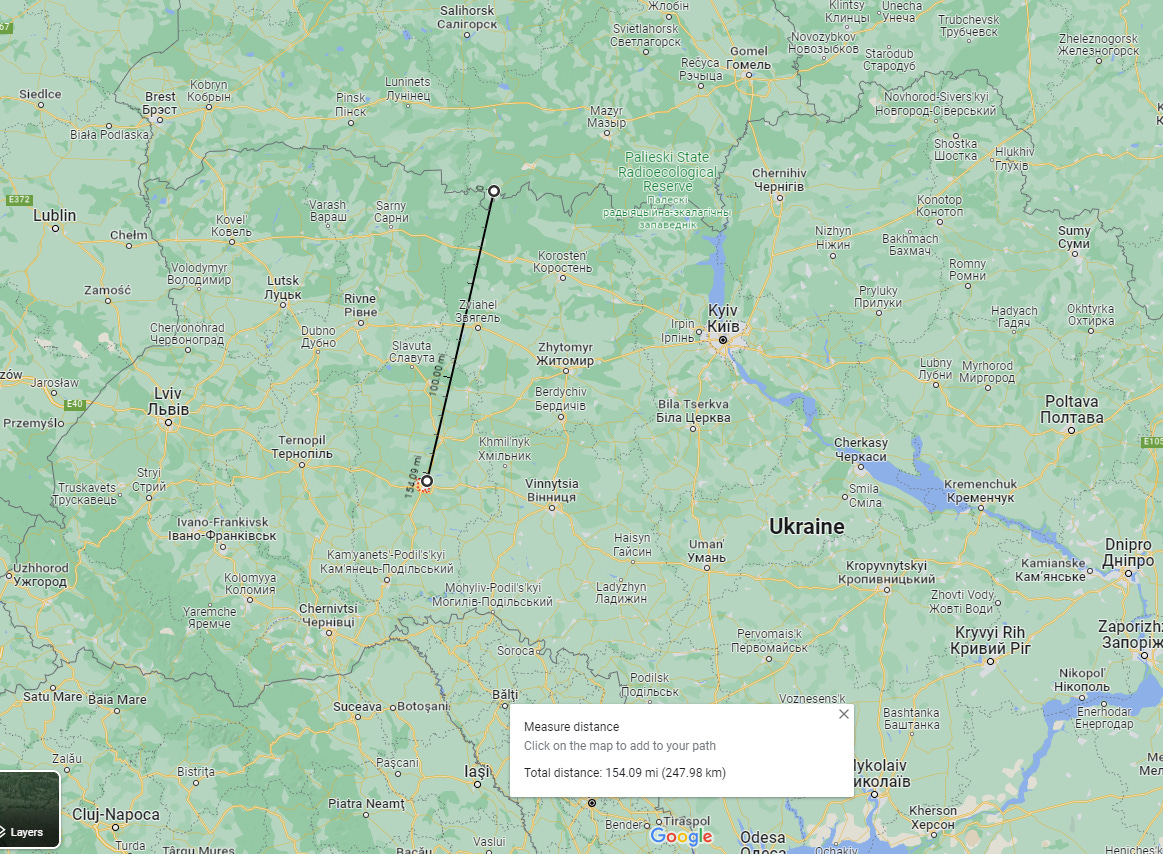

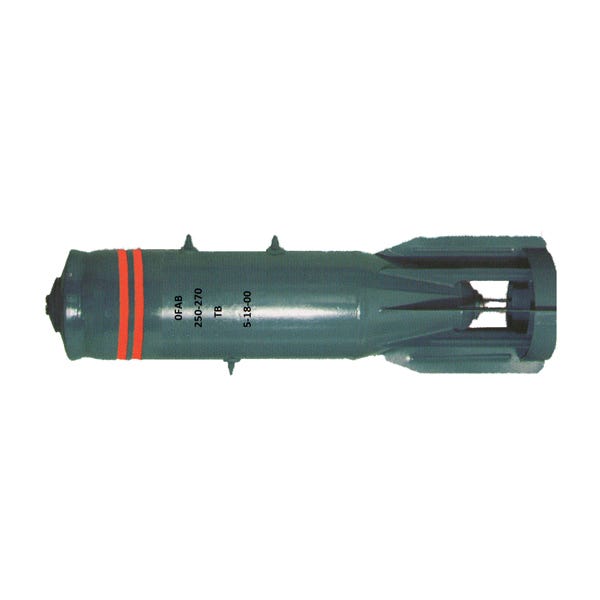

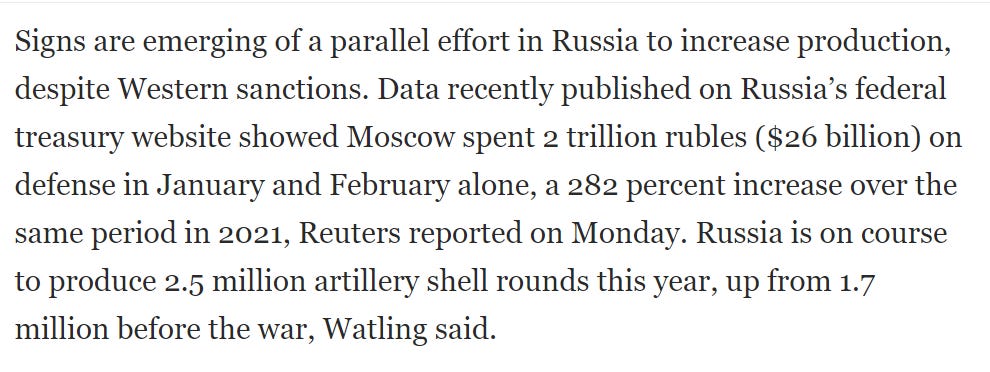
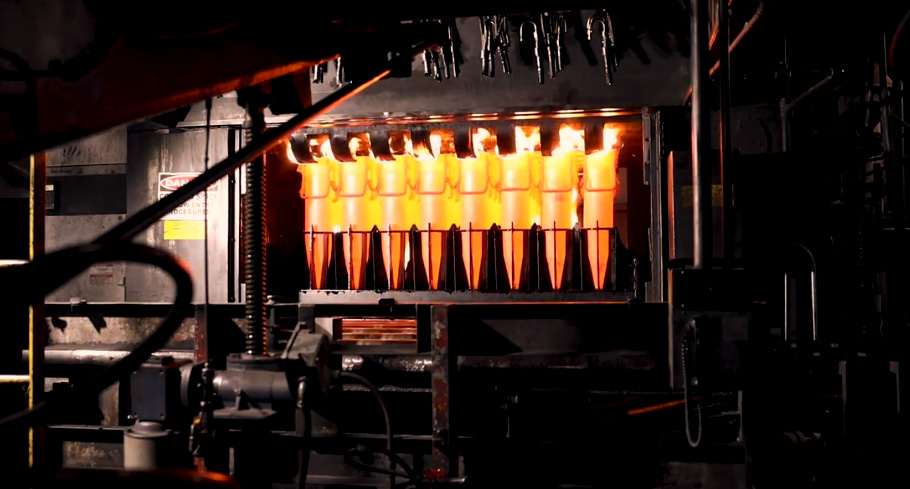

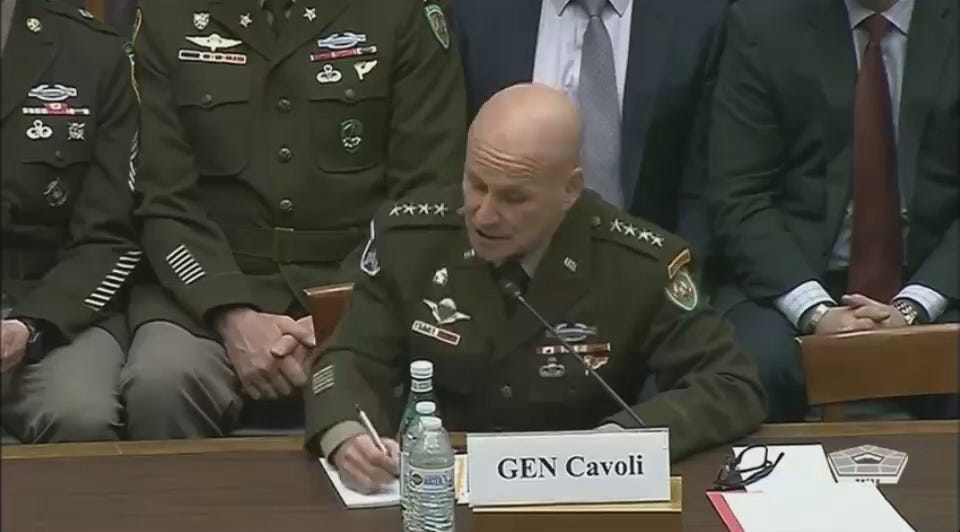

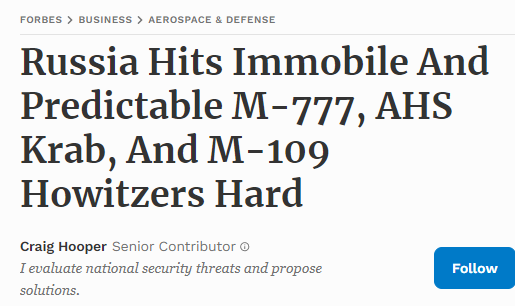
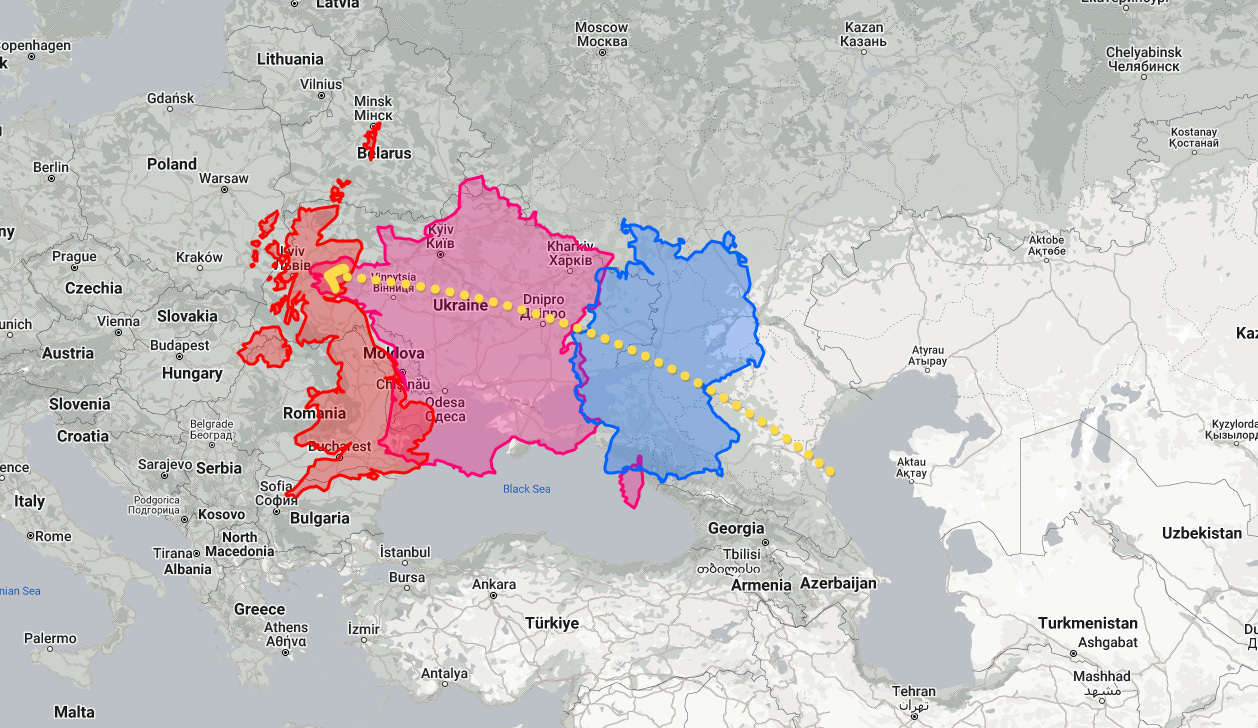
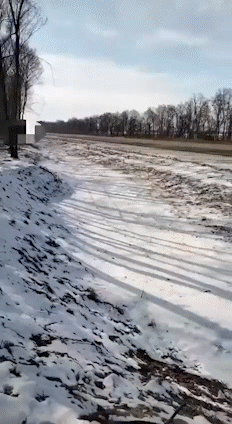
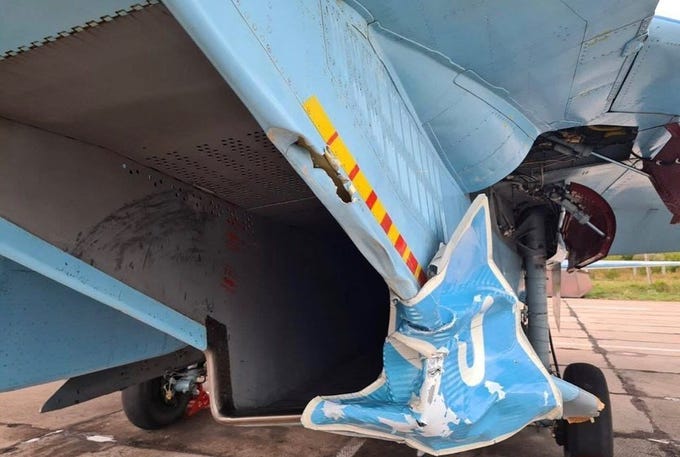
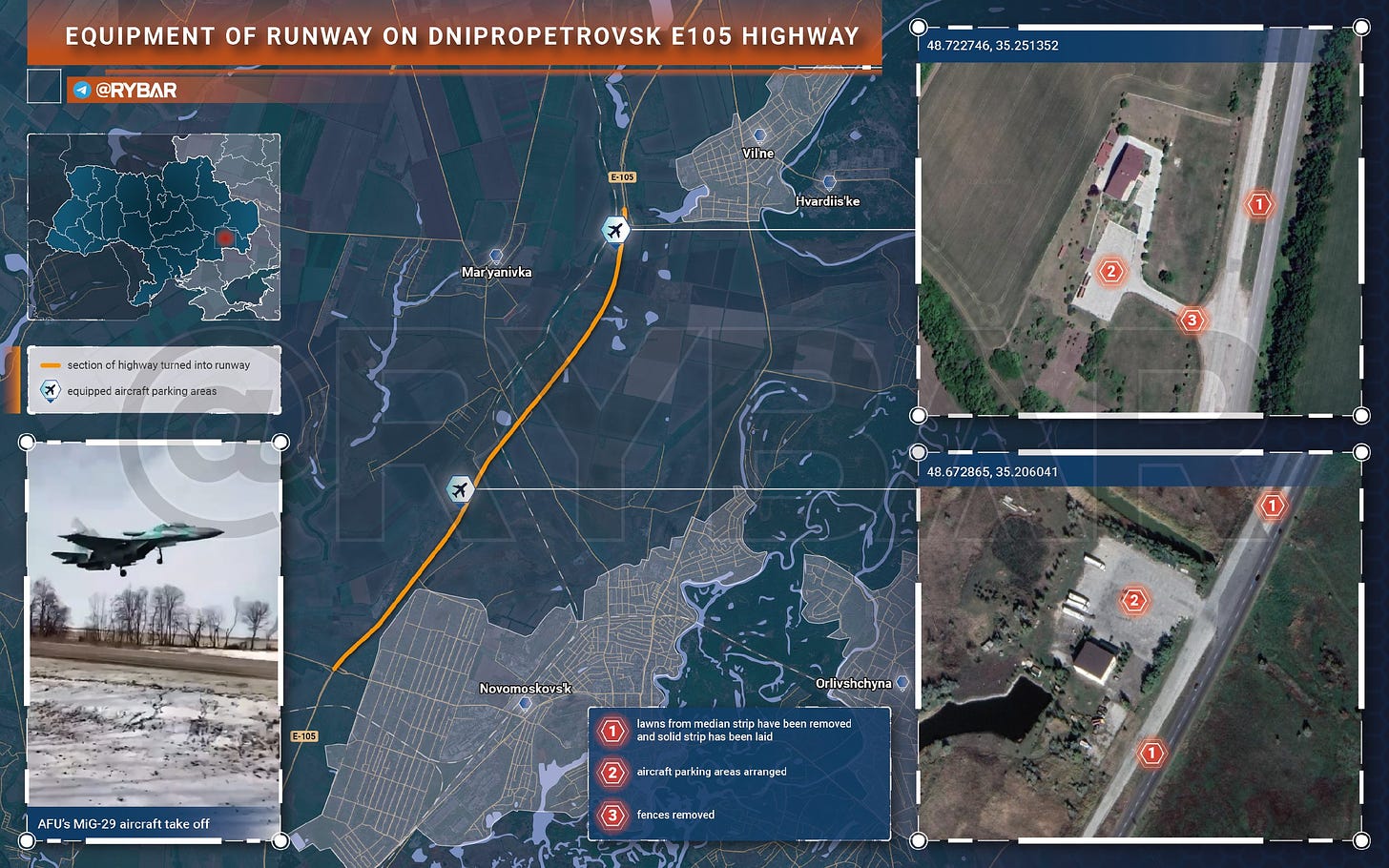
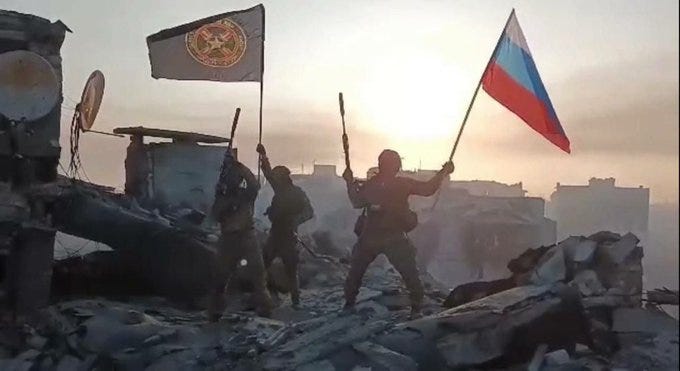


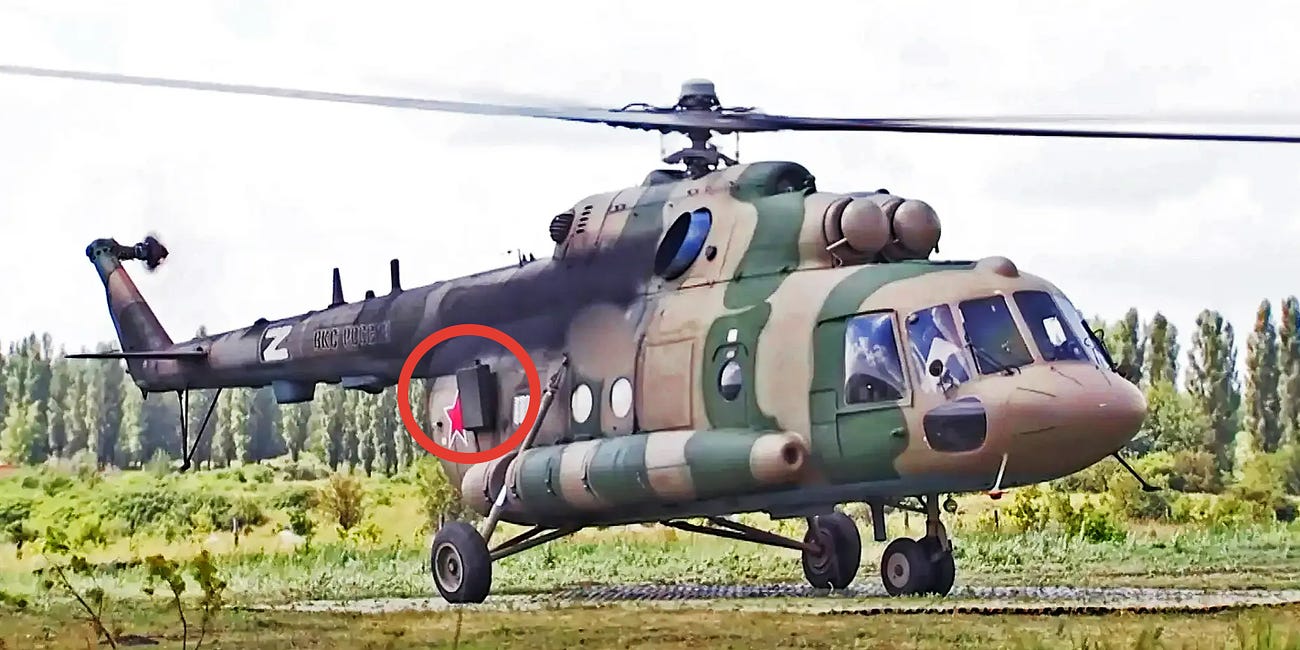
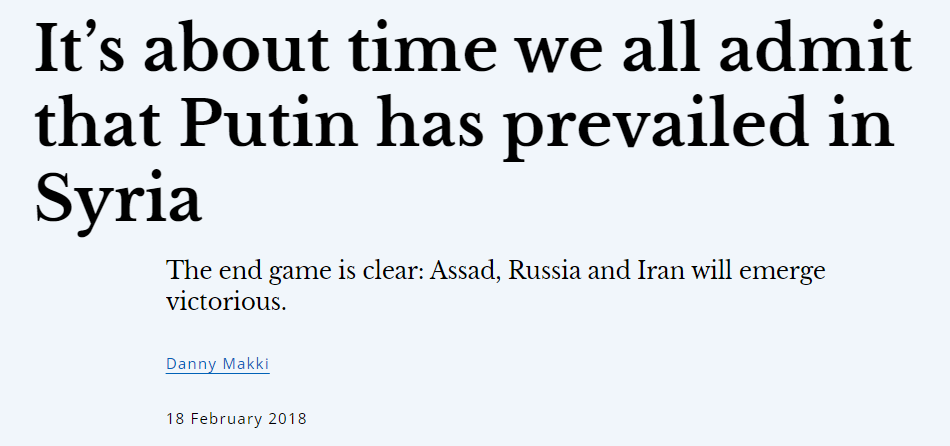
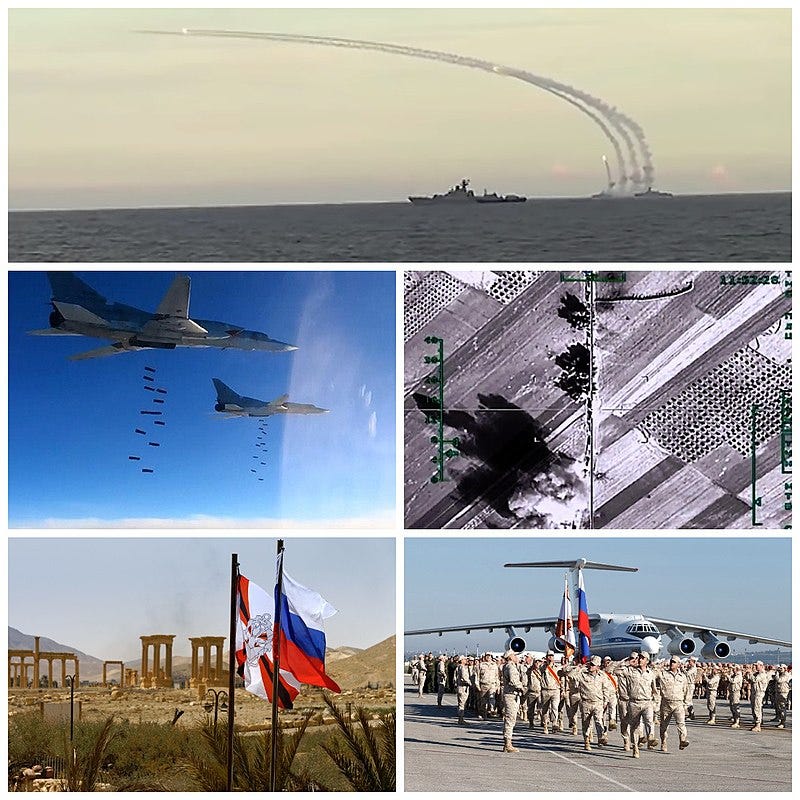


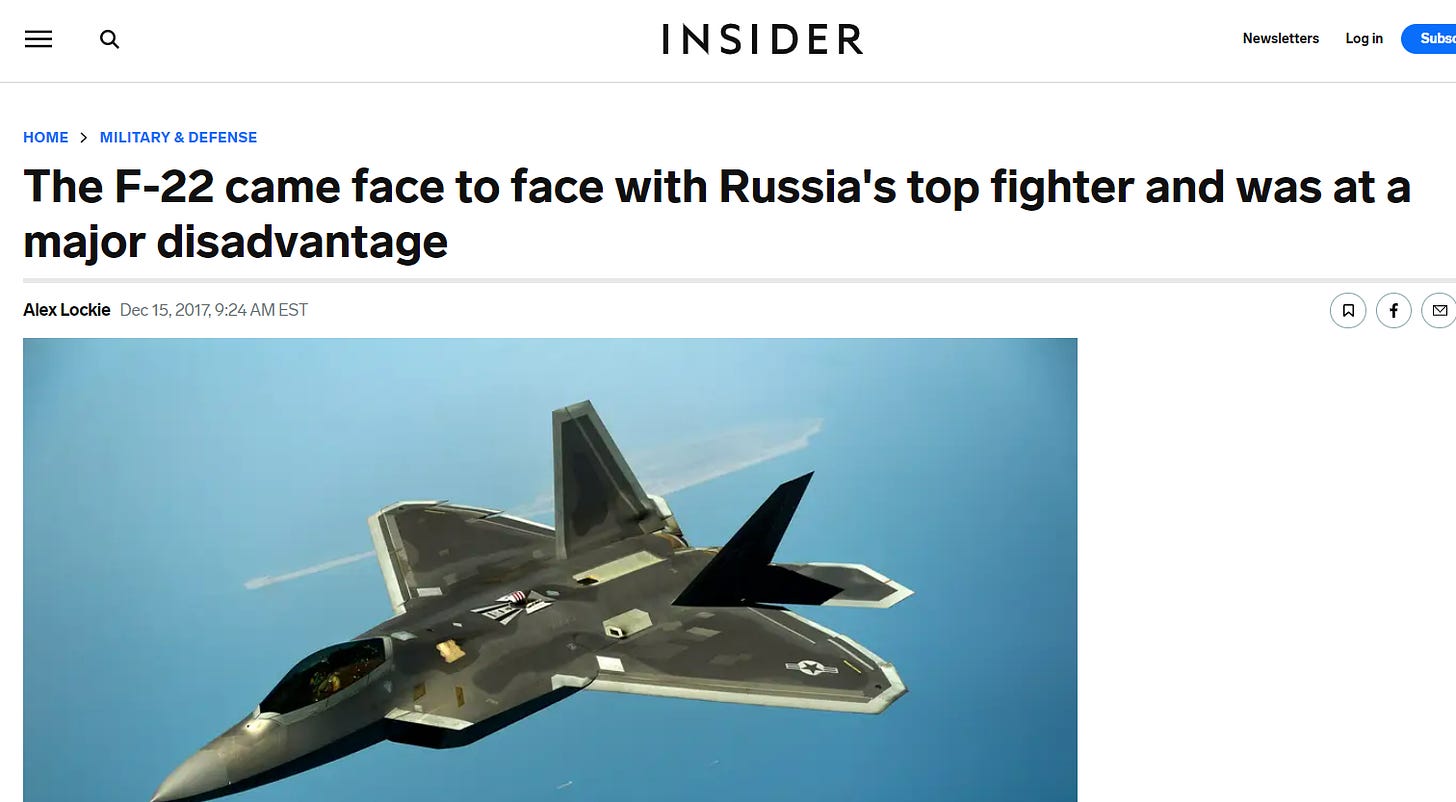


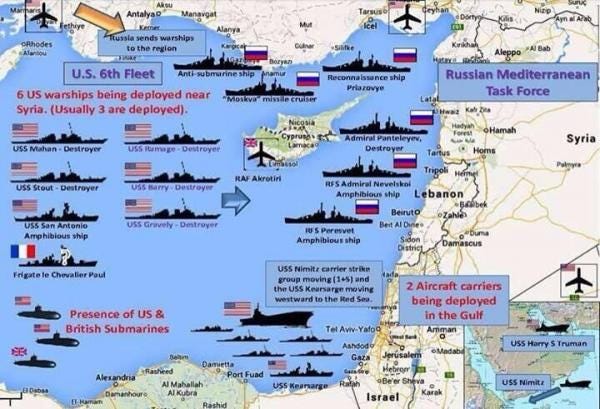
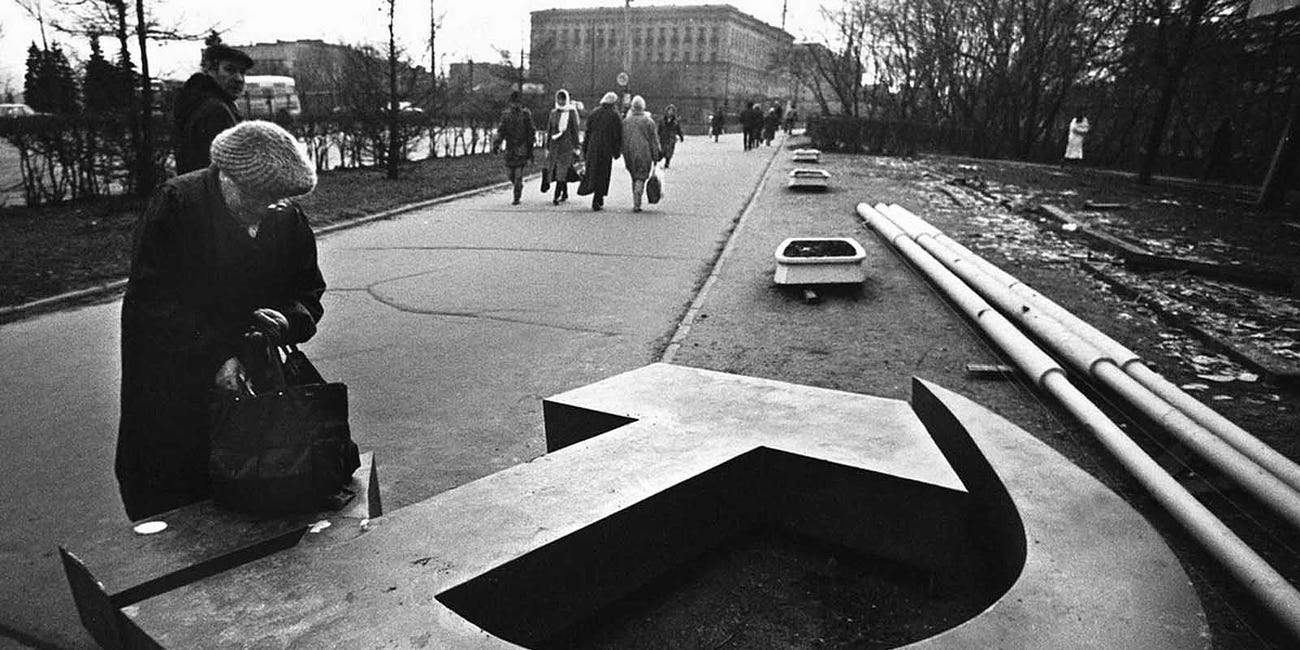

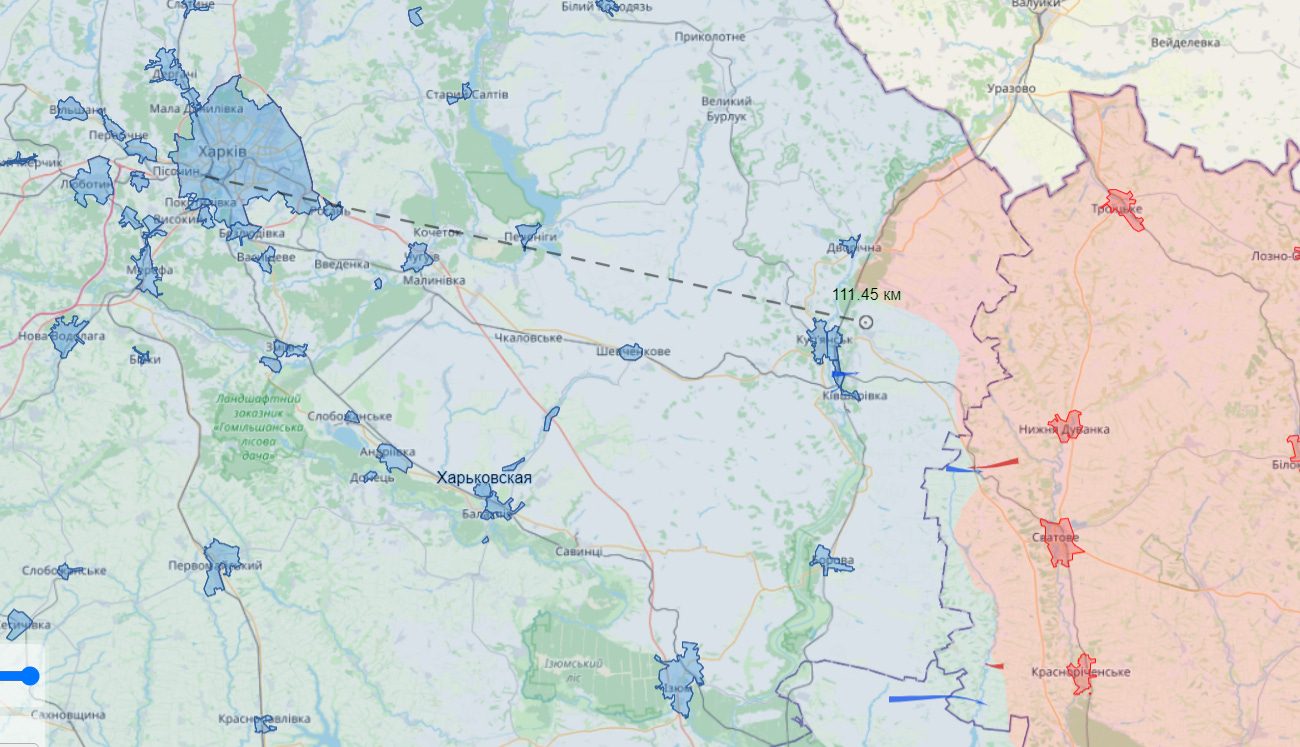
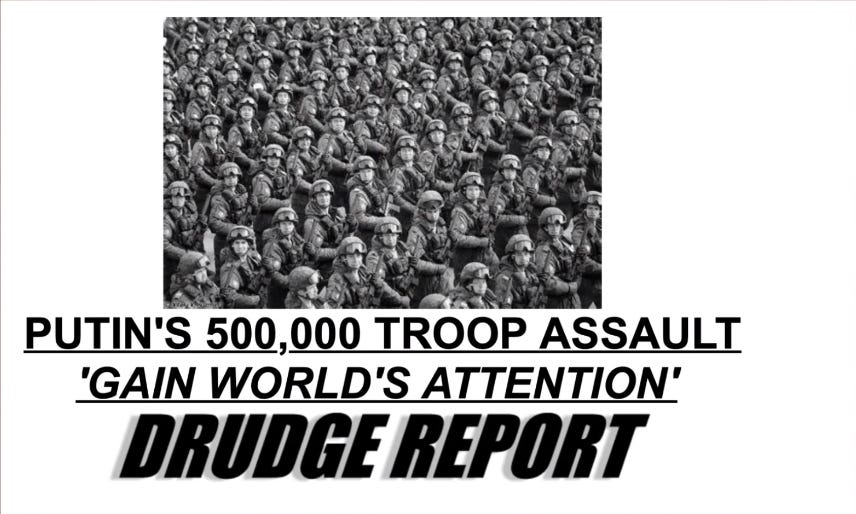
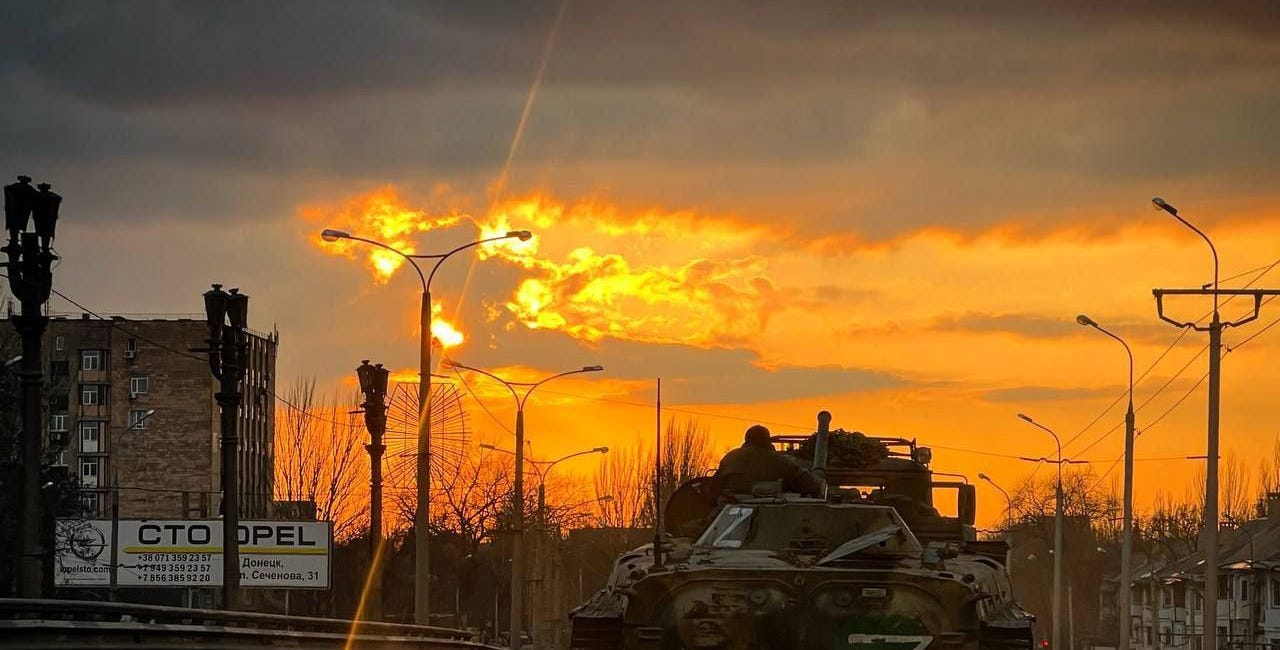
Thank you for this excellent analysis.
Let's discuss what's going on inside of Poland, politically speaking. Poland is going to have its next general election in November of this year, so there are a lot of forces jockeying for position, which can roughly be divided into four camps
1) The ruling PiS party
2) The Deep State (Radoslaw Sikorski + Applebaum)
3) Confederation (Konfederacja) nationalists
4) Donald Tusk leftists
Donald Tusk is beloved by the EU and openly advocates all the "woke" stuff like trans rights, green energy, abortions, and LGBTQ parades, drag shows, et al. His camp is less about being anti-Russia and more about opening the spigots for EU cash, studying abroad, "European integration" welcoming immigrants and foreign workers, etc. while wearing cool Nike sneakers and listening to American rap songs.
The Deep State duo of Sikorski and Applebaum just attended Bilderberg last weekend, and Sikorski was obviously in on the Nordstream bombing. This group is small but highly influential with a direct line to the swamp in Washington, and is virulently (as in foaming at the mouth) anti-Russian and is in support of more troops, more guns, and all that jazz about annexing Ukraine or reviving the Commonwealth, etc.
Konfederacja (officially the "The Confederation Liberty and Independence Party") are the "nationalists" or patriots or urban core of (mostly) young men who want Poland to be like Hungary under Orban (which is also a majority Catholic country) They're firmly anti-woke and are, in many cases, pushing for a more hardcore Catholic stance on private life issues (such as outlawing abortions). They're also sick and tired of Ukrainian refugees and foreign workers and want them ALL out. Konfederacja is currently rising in the polls. Call them the "MAGA" of Poland, if you like.
That leaves the ruling PiS, which keep tripping over their own feet because the shine is off the apple as they've been around too long (they're sinking in the polls, but still the most popular, at least for now). On one hand, they want to appease the EU (and keep the money and goodies flowing from them), but on the other hand, the conservative heartland (which is a core constituent) is angry about stuff like LGBTQ parades, abortions on demand, and most importantly, the devastation of Polish agriculture due to the influx of untaxed Ukrainian goods. Call the PiS the "middle ground" group.
So yeah, damn right, I believe the PiS is secretly lobbying to wind up the war in Ukraine. It'd fix the farmer/rural constituent problem as well as the unbelievably expensive Ukrainian refugee problem. It'd also shore up the budget which got pummeled by all those free gifts of weaponry, et al to Ukraine. But to save face, they sure as hell can't openly advocate for it or else risk the wrath of the Deep State/Tusk EU/Empire forces which would unleash the propaganda machine against them.
Keep in mind that PM Morawiecki got fucked hard in the ass by the Deep State last year when Ukraine killed two Polish farmers with that "errant" S-300 strike that was set up to be a false flag event to kick off WW3. The Deep State basically forced him to lie and say it was a Russian missile until, whoops, the op backfired just hours later when a local firefighter on the scene published the photos of the missile remnants and the internet quickly deduced they were obviously from (one or two is still debated) an S-300 fired by Ukraine.
That event might've been "memory holed" by the attention deficit West, but it isn't forgotten in Poland.
Basically, the PiS are genial middle-of-the-road folks being squeezed from all sides, and so it's going to be a screaming match between the EU Tusk leftists and the Konfederacja right-wing camps as we get closer to November. Best case scenario for PiS is they barely maintain a majority in Parliament and worst case is having to form a ruling alliance with one of the fringe parties, but either way, the days of PiS are numbered.
I feel to comment on number 26.
"Oh that will be so nice Simplicius, we'll get to know each other and be buddies."
What bull crap! I would treat all such queries as FBI trolls. If people don't respect your anonymity they must be living in the 20th (last) century.
Please do not give an inch of your identity.
Don't do interview videos (facial recognition).
Don't do podcasts, (vocal recognition).
Do discussions in written format, submitting questions and taking the written replies.
Give us the transcripts only. (The best anonymity for talking with colleagues is the desktop app called "Session".) Not email.
If you know how to ensure complete anonymity on a separate (vanilla) computer, with no revealing logins, keep it that way. If you are still experimenting, well refine your technique. My Substack is based on Linux and a completely anonymous email client, with absolutely no knowledge of who I am or what my home IP address is. (It is tutanota.com if you don't know it). With that I can multiply my SEPARATE accounts by starting other emails, like on GMX or Proton. Then every application has another false reference point. I don't email to friends and family with tutanota. It is the backbone of my privacy.
(Of course your legacy identity is on your old computer to do banking and renew your driver's license, say hi to mom, etc. No need for it to disappear.)
There is no reason on earth we need your so-called credentials. (Have you ever made a resume')? You leave out all the questionable stuff, right? To me, all credentials are massaged. I ONLY DECIDE ON THE LOGIC OF THE CONTENT, and the utmost respect you show every time. Not what I am supposed to believe from this "authority". Even Saker did not have that respect, like his shorthand Ukranazies or the "crazies in the basement". If you need to refer to your own experience, allege a close relationship to an authority figure, (a false one because that authority may be you.)
The rest of you could take the hint and find what you can do for partial anonymity. I am not a techie at all. Finding out all you need to know only takes your interest.
PLEASE SIMPLICIUS, DON'T TAKE THE BAIT. Sent with the utmost care and respect for you as a person.
.